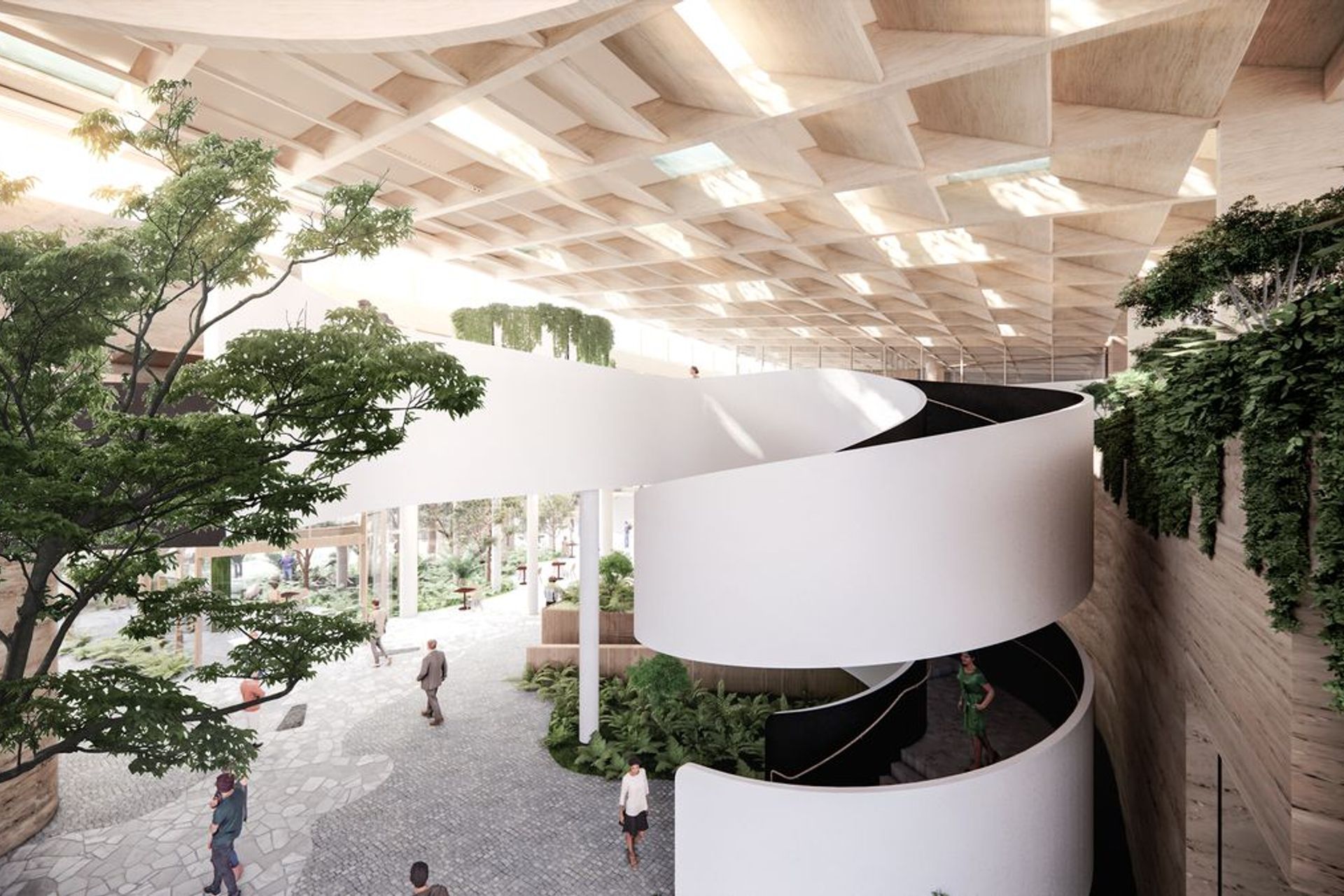Woods Bagot set to restore Forestry Tasmania building
Written by
30 January 2022
•
3 min read

The heritage-listed Forestry Tasmania building is set to be restored to its former glory, courtesy of renowned global architecture firm Woods Bagot. Initially built in the 1930s, the Melville Street property comprises two warehouse buildings united by an iconic glass dome, the latter of which was added in 1997 during an award-winning restoration undertaken by Circa Morris-Nunn Chua Architects.
Since being vacated by Forestry Tasmania in 2017, the domed building has fallen into disrepair and was almost demolished under a bid by Tasmania Police to alter the structure for its own headquarters. However, following its acquisition by the University of Tasmania in 2018, the historic building is poised to receive a new lease on life. The education institution decided upon restoring the buildings with the intention of transforming them into a modern learning and teaching facility, with Woods Bagot helming the process.

It’s the first time anything I’ve built has been heritage listed. So it’s nice to know that legacy is now going to be preserved and given new life
An architectural legacy lives on
Working collaboratively with architect Robert Morris-Nunn, who was involved in the initial dome restoration project, Woods Bagot intends to not only restore the structural elements of the building, but replant the verdant indoor forest that once took centre stage in the atrium below the glass dome.
“Seeing the building fall into disuse over the last few years has been really sad, so to know that the University is planning to restore it, and even reinstate the forest under the dome, is amazing news,” said architect Robert Morris-Nunn. “It’s the first time anything I’ve built has been heritage listed. So it’s nice to know that legacy is now going to be preserved and given new life."

Sustainability meets classic design language
The restored building will comprise part of the Midtown precinct of the University of Tasmania campus, in line with the institution’s plans to relocate its campus into the Hobart CBD. According to Phil Leeson, Campus Transformation Executive Director at University of Tasmania, the building will draw from Hobart’s design language and use of architectural forms, while utilising sustainable design principles, noting that “we are creating a very sustainable and beautiful building by retrofitting an existing space with a low carbon and circular design that makes extensive use of timber."
“The design celebrates Hobart’s architectural heritage, scale and character,” added Leeson. “We are delighted to be restoring community access to an iconic Hobart space for everyone to enjoy. By bringing a major disused building back to life, we will bring vitality and character to this part of the city."

Biophilic design enhances the Forestry Tasmania building's new purpose
An integral element of the restoration, the lush indoor forest taps into biophilic design principles, honing in on the inherent human desire to connect with nature. Accompanied by natural lighting and ample ventilation, the connection to the natural world within a teaching and learning context promotes better cognitive function, increased focus and alertness, and decreased stress levels.
However, the emphasis on green space is not a new notion to the project. “The garden was always part of the intention for the space as I designed it,”said Morris-Nunn. “To see it brought back to life to be enjoyed by the community will be wonderful."
Words by Tanisha Angel